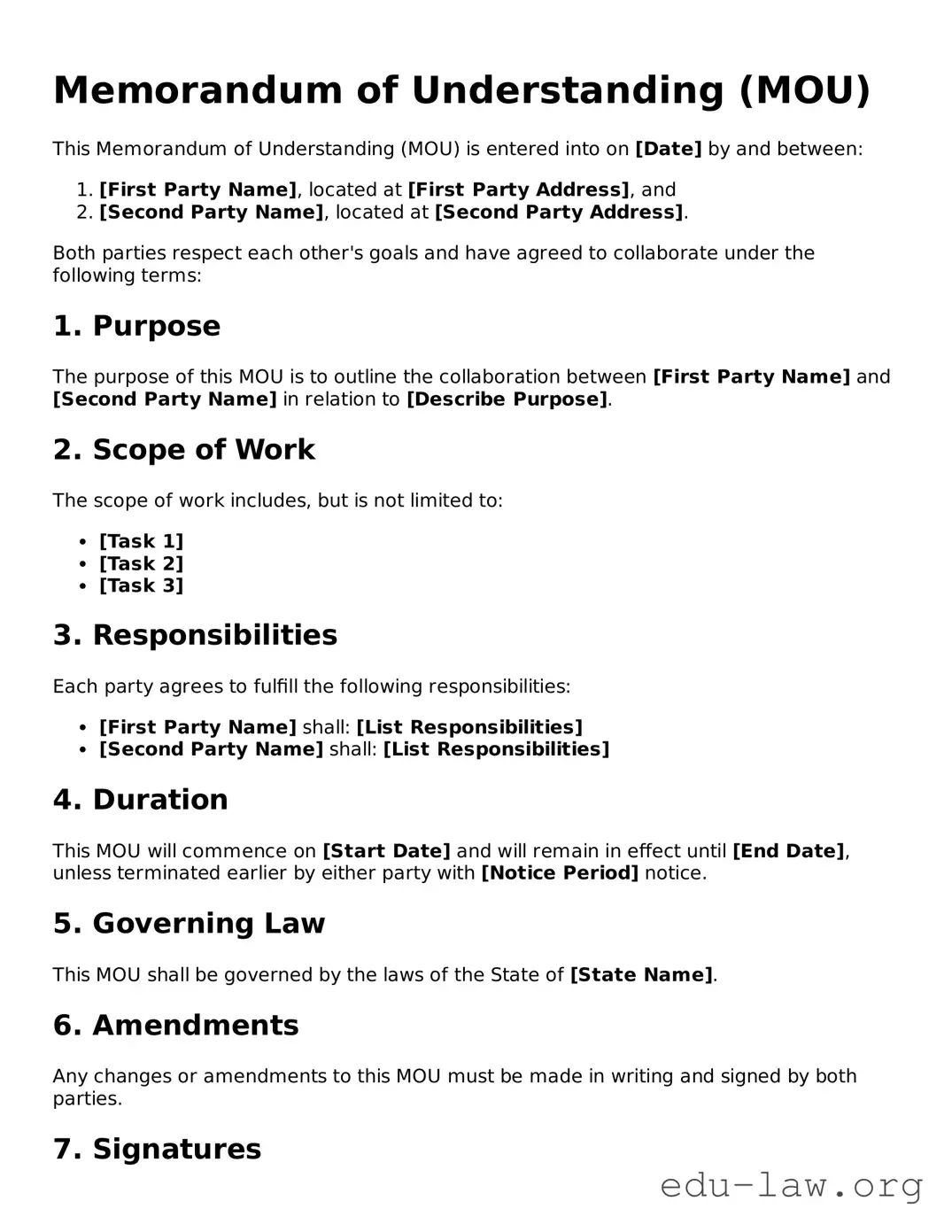What is a Memorandum of Understanding (MOU)?
A Memorandum of Understanding, often abbreviated as MOU, is a document that outlines the intentions and agreements between two or more parties. It serves as a formal yet flexible framework for collaboration, detailing each party's responsibilities and the goals they aim to achieve together. While it is not typically legally binding, an MOU signifies a serious commitment to the discussed terms and can help clarify expectations.
What are the key components of an MOU?
An MOU generally includes the purpose of the agreement, the roles and responsibilities of each party, the duration of the agreement, and any specific goals or objectives they wish to achieve. It may also cover confidentiality provisions and topics related to dispute resolution, should conflicts arise. Including these components ensures that all parties involved have a clear understanding of their commitments.
Is an MOU legally binding?
Most MOUs are not legally binding, meaning that they can’t typically be enforced in a court of law. However, this can depend on the language used within the document. Some parties choose to include provisions that make certain aspects binding, which can lead to enforceability. When drafting an MOU, clarity regarding the intent—whether it is to be binding or non-binding—is crucial.
When should I consider using an MOU?
An MOU can be useful in many scenarios. For example, it’s often employed when two organizations or groups wish to collaborate on a project but want to formalize their intentions in a clear manner. It can also be beneficial in academic partnerships, joint ventures, or community programs. If clear roles and expectations are essential for success, an MOU may be a suitable tool.
How is an MOU different from a contract?
While both an MOU and a contract outline agreements between parties, a contract typically carries more legal weight. Contracts usually include detailed terms and conditions, are enforceable in court, and often require signatures and mutual consideration. In contrast, an MOU is more informal and serves primarily as a guide for communication and cooperation rather than a legally enforceable document.
Do I need a lawyer to draft an MOU?
While it is possible to draft an MOU without legal assistance, having a lawyer review the document can provide peace of mind. A legal expert can help ensure that the terms are clear, balanced, and align with your intentions. This is especially important if the MOU contains binding elements or if it is related to a complex agreement.
Can an MOU be modified after it is signed?
Yes, an MOU can be modified, but the process usually requires agreement from all parties involved. Any changes should be documented in writing to avoid misunderstandings. It is advisable to reference the original MOU and explicitly outline the modifications to ensure clarity and mutual consent moving forward.
